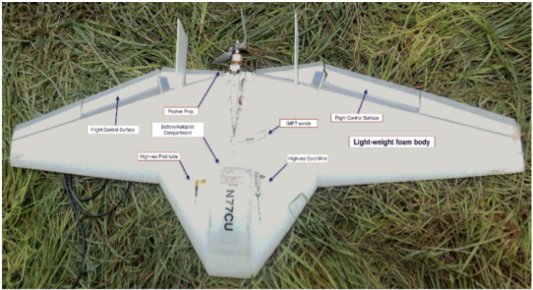研究課題
International collaborative study on atmospheric turbulence based on simultaneous observations with the MU radar and small unmanned aerial vehicles (UAV)
MUレーダー・小型無人航空機(UAV)同時観測による大気乱流特性の国際共同研究
研究組織
| 代表者 | Hubert Luce (MIO, Toulon University, France) |
|---|---|
| 共同研究者 | L. Kantha (University of Colorado) R. Wilson (LATMOS, CNRS, France) H. Hashiguchi (RISH, Kyoto University) M. Yabuki (RISH, Kyoto University) D. Lawrence (University of Colorado) A. Doddi (University of Colorado) |
| 関連ミッション |
|
研究概要
Owing to fast technological advances and the development of low-cost systems, rotary- and fixed-wing unmanned aerial vehicles (UAV) are suggested for probing the lower atmosphere. These uncrewed systems can be of prime importance in humanosphere science, for sensing in dangerous and remote areas (such as near severe storms). Their controllable position, their ease of operation and their possible re-use are major advantages over standard in-situ instruments and ensure a wide-spread use in a near future.
Small, lightweight and inexpensive fixed-wing DataHawk UAVs capable of collecting simultaneous multisensor data were developed by University of Colorado. These systems were deployed during three field campaigns called Shigaraki UAV Radar Experiment (ShUREX) at Shigaraki MU Observatory in 2015–2017. One of the overarching goals of these campaigns was to demonstrate the usefulness of DataHawk UAVs in the vicinity of the MU radar for studying turbulence in the lower troposphere and in the atmospheric boundary layer. Turbulence and the related atmospheric motions still attract much attention these recent years: turbulent motions do not only influence global weather phenomena through their dissipation of energy at small scales but also affects the propagation of electromagnetic and acoustic waves, aviation safety, and the diffusion of atmospheric admixtures and pollutants, for example.
The DataHawk UAVs were equipped with (1) commercial sensors for measuring standard pressure, temperature and humidity parameters and (2) high-resolution and low-noise cold wire temperature (CWT) and wind velocity Pitot sensors for deriving turbulence parameters. Time series were gathered during various atmospheric conditions, mainly along helical climbing and descending flights. The DataHawk UAVs were guided into atmospheric structures of interest owing to high-resolution images of MU radar echo power produced in real time. The wealth of the datasets is such that a large variety of aspects on measurement physics and small-scale atmospheric dynamics can be tackled. At present, our investigations have already yielded fruitful results in different aspects of the study and helped assess some theoretical developments in the fields of stratified and convective turbulence and measurement physics.
The research plans are based on the continuation of analyses of radar and in situ datasets collected during ShUREX in June 2015, May–June 2016, and June 2017. Turbulence parameters in stratified and convective conditions (namely, structure parameters for temperature and refractive index fluctuations, turbulent kinetic dissipation rate, eddy diffusivity, turbulence scales and dimensionless numbers, etc.) in the lower atmosphere (up to ~4–5 km) are currently being estimated from DataHawk UAV, radar and balloon data. Most of the processing methods for retrieving primary turbulence parameters from UAV and MU radar data are now implemented and have been tested in various atmospheric conditions. Using comprehensive information provided by the various datasets, our current analyses focus on the evaluation of theoretical and numerical modellings proposed for characterizing the energetics of turbulence generated by shear instabilities in stratified conditions, by convective instabilities related to cloud dynamics and by convection in clear and cloudy atmospheric boundary layers.
 The University of Colorado DataHawk UAV
The University of Colorado DataHawk UAV
ページ先頭へもどる
2020年8月3日作成


